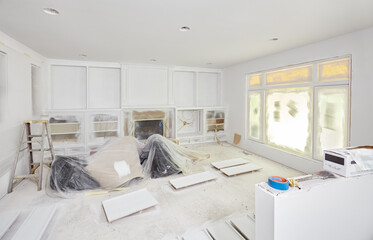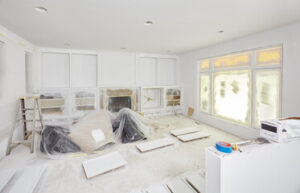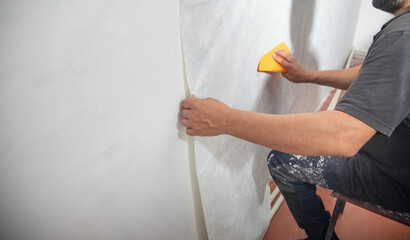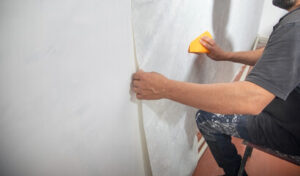Mold remediation is essential for maintaining a healthy indoor environment and preventing structural damage in residential and commercial properties. Mold thrives in damp, humid conditions and can spread quickly if not addressed promptly. 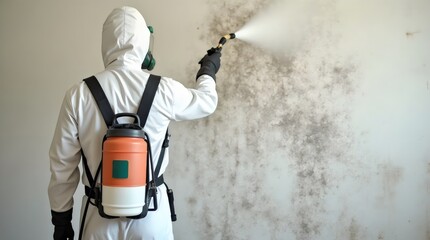
It poses significant health risks, including respiratory issues, allergic reactions, and skin irritation, making it crucial to handle mold infestations with precision and care. Effective mold remediation involves more than just cleaning visible mold; it requires identifying the source of moisture, containing the affected areas, and implementing long-term solutions to prevent recurrence. Visit https://utahmoldremovalandremediation.com to learn more.
The process of mold remediation begins with a thorough inspection and assessment of the affected area. Mold spores are microscopic and can spread through the air, making it difficult to detect the full extent of an infestation without professional-grade equipment. Moisture meters, infrared cameras, and air sampling devices are often used to identify hidden mold growth behind walls, ceilings, and flooring. Once the source of moisture is located, it is essential to address it before proceeding with mold removal. Failure to eliminate the moisture source will result in the mold returning, even after a thorough cleaning.
Containment is a critical step in mold remediation to prevent the spread of spores to unaffected areas. Specialized barriers and negative air pressure systems are used to isolate the contaminated area, ensuring that mold spores do not circulate through the HVAC system or settle on clean surfaces. Air scrubbers equipped with HEPA filters are often deployed to capture airborne mold spores and improve air quality during the remediation process. Protective gear, including respirators, gloves, and disposable coveralls, is worn by remediation technicians to minimize exposure and prevent cross-contamination.
Once the contaminated area is secured, the removal process begins. Non-porous surfaces such as metal, glass, and plastic can usually be cleaned with antimicrobial solutions and high-efficiency vacuums. However, porous materials like drywall, carpeting, and insulation often need to be removed and replaced, as mold can penetrate deep into their fibers. The affected materials are carefully bagged and disposed of according to environmental regulations to prevent further contamination. Any remaining surfaces are treated with mold inhibitors and antimicrobial coatings to prevent regrowth.
Drying and dehumidification are essential components of successful mold remediation. Industrial-grade dehumidifiers and air movers are used to remove excess moisture from the air and surfaces, creating an environment that is inhospitable to mold growth. Proper ventilation is also established to maintain consistent humidity levels and improve air circulation. Monitoring devices are used to measure moisture levels throughout the process to ensure that the affected area is thoroughly dried before restoration begins.
Restoration involves repairing or replacing materials that were removed during the remediation process. Drywall, flooring, and insulation are installed, and any cosmetic damage such as paint or trim is repaired. The goal is to return the space to its pre-mold condition while implementing improvements to prevent future mold issues. This may involve installing vapor barriers, improving drainage systems, or upgrading ventilation to reduce humidity levels. Restoration professionals ensure that all materials used are mold-resistant and that the space is properly sealed against future moisture intrusion.
Post-remediation verification is an important step to confirm that mold has been effectively removed and that the environment is safe for occupancy. Air and surface sampling are conducted to measure mold spore levels and ensure they are within acceptable limits. Professional inspectors use specialized equipment to detect any remaining moisture or hidden mold growth. If test results indicate that the remediation was successful, the containment barriers are removed, and the space is cleared for use. Regular monitoring and maintenance are recommended to prevent future mold issues and to address any signs of moisture or humidity promptly.
Mold remediation requires a comprehensive understanding of mold behavior and environmental factors that contribute to its growth. Mold thrives in areas with high humidity, poor ventilation, and organic materials that provide nutrients for growth. Bathrooms, basements, crawl spaces, and attics are common hotspots for mold infestations due to their susceptibility to moisture buildup. HVAC systems can also become breeding grounds for mold if not properly maintained, as condensation within ductwork and filters can create ideal conditions for spore growth and circulation. Identifying and addressing these vulnerabilities is key to preventing mold recurrence.
Preventative measures play a crucial role in long-term mold control. Regular inspections of plumbing systems, roofing, and windows can help identify and repair leaks before they lead to mold growth. Proper ventilation in high-humidity areas such as kitchens and bathrooms is essential for reducing moisture levels and preventing condensation. Dehumidifiers and air conditioning systems can be used to maintain optimal humidity levels, while exhaust fans and open windows can improve air circulation. Using mold-resistant materials during construction or renovation can further protect against future mold issues.
Education and awareness are important for maintaining a mold-free environment. Occupants should be informed about the signs of mold growth, such as musty odors, discoloration on walls or ceilings, and respiratory discomfort. Prompt action should be taken at the first sign of mold to prevent it from spreading and causing further damage. Encouraging occupants to report leaks, moisture buildup, or ventilation issues allows for early intervention and reduces the risk of extensive mold infestations.
Mold remediation also involves addressing the psychological impact of mold exposure. Prolonged exposure to mold can lead to anxiety, stress, and a sense of discomfort within the living or working environment. Restoring a clean and healthy space contributes to improved mental well-being and creates a sense of security. Professionals who specialize in mold remediation often work closely with property owners and occupants to provide reassurance and support throughout the process. Clear communication about the remediation plan, expected outcomes, and follow-up measures helps build trust and confidence in the restoration process.
Advancements in mold remediation technology have improved the efficiency and effectiveness of the process. Cutting-edge antimicrobial treatments, UV-C light technology, and air purification systems provide additional layers of protection against mold growth. Non-toxic, eco-friendly cleaning solutions are now widely available, offering safe alternatives for sensitive environments such as healthcare facilities and schools. Innovations in moisture detection technology allow for early identification of hidden leaks and moisture buildup, enabling proactive measures to prevent mold growth before it becomes a problem.
Professional mold remediation services are essential for addressing large-scale infestations and complex contamination scenarios. DIY mold removal methods are often ineffective for deep-seated mold growth or widespread contamination, as improper handling can cause spores to spread and worsen the problem. Certified mold remediation professionals are trained to follow industry standards and safety protocols, ensuring thorough and safe removal of mold. Their expertise in identifying moisture sources, implementing containment measures, and using specialized equipment ensures that the remediation process is successful and long-lasting.
The long-term benefits of mold remediation extend beyond improved air quality and structural integrity. Removing mold enhances the overall value and marketability of a property, as potential buyers and tenants are more likely to invest in a space that is clean, safe, and well-maintained. A mold-free environment also reduces health-related costs associated with respiratory issues and allergic reactions, contributing to a higher quality of life for occupants. The combination of improved health, structural stability, and peace of mind makes mold remediation a worthwhile investment for any property owner.
Mold remediation is not a one-time solution but an ongoing process of monitoring, maintenance, and prevention. Establishing regular inspection schedules, maintaining proper ventilation, and controlling humidity levels are essential for keeping mold at bay. Educating occupants about the importance of moisture control and early detection empowers them to take proactive measures and minimize the risk of future mold issues. By combining professional remediation services with preventative strategies, property owners can create a safe, healthy, and mold-free environment for years to come.
